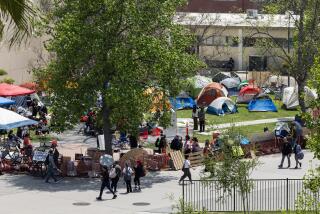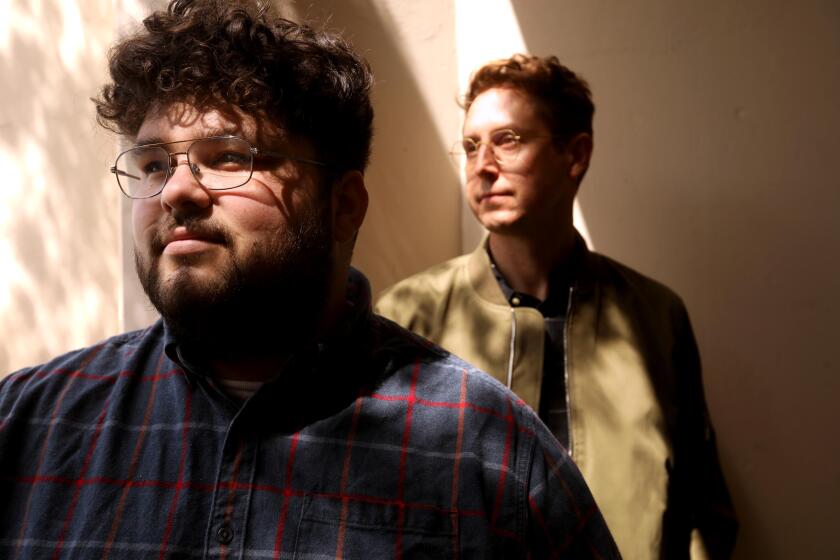Arson Investigators Prepare for Fire Season at Annual Conference
Kathleen Lange will never know all of the 340 arson investigators who have poured into this sleepy coastal town near Monterey for a conference this week. But she still considers them family.
And whether an arsonist sets fire to tinder-dry Silverado Canyon in Orange County or the brown hills east of San Diego, Lange takes it personally. It’s her colleagues around the state who will be called to stamp those blazes out.
“People that set fires on purpose are putting my brothers and sisters at risk,” said Lange, a fire investigator with the Orange County Fire Authority. “And I want to catch them.”
That feeling is particularly strong this year among arson investigators assembled here for the California Conference of Fire Investigators. They face a year of record dryness and huge fire potential--one that they know could inspire the most dangerous firebugs.
Before the conference is finished Wednesday, investigators will talk for hours about the danger in the hills this year. They will watch one of the largest controlled building burns to be attempted at such an event to perfect their sleuthing skills. And they will get advice on how to withstand a defense attorney on the witness stand.
Several investigators said they recently returned from assisting in the investigations of huge wildfires in Arizona, Colorado and South Dakota.
“We’re basically being told to get ready to travel,” said Keith Burson, a battalion chief for the South Placer Fire District. “We’re seeing a lot of dangerous fire behavior.”
Firefighters from Burson’s company recently returned from the Hayman Fire in Colorado, which burned about 150,000 acres in June.
That blaze was just part of what is quickly becoming a very destructive fire season. With the peak months of August and September still ahead, the number of acres burned is nearly triple the 10-year average of 1.1 million acres.
In California, 4,417 fires have charred 142,788 acres.
“The fire season is controlled by fuels, and there is a lot of fuel,” said Tim Simpkins, a fire investigator for the Livermore-Pleasanton Fire Department in the San Francisco Bay Area. “We’re seeing it all across the West, and [California] is ripe right now.”
While they worry about forest and brush fires, the conferees will spend much of their session honing their skills on the source of structural fires.
Volunteers constructed a series of rooms at the closed Ft. Ord Army base, and one by one they will be burned, then inspected by clipboard-toting arson investigators.
One room contained a set of children’s bunk beds, stuffed animals and toys. The fire was set to simulate what would occur in a real event. Within two minutes, the room was in flames.
The investigators took detailed notes as thick black smoke churned overhead and a team of firefighters blasted the blaze with hoses.
About 100 feet away, a team of fire researchers used a computer hooked to the building to chart the speed and heat of the fire.
Like football players watching tape from a game the night before, investigators planned to spend part of today studying the fires on videotape, said Greg Smith, a fire investigator with the California Department of Forestry.
“The standards are higher in an investigation now,” Smith said as a room set up to look like a kitchen burned behind him. “We want to be as accurate as possible.”
More to Read
Start your day right
Sign up for Essential California for news, features and recommendations from the L.A. Times and beyond in your inbox six days a week.
You may occasionally receive promotional content from the Los Angeles Times.






